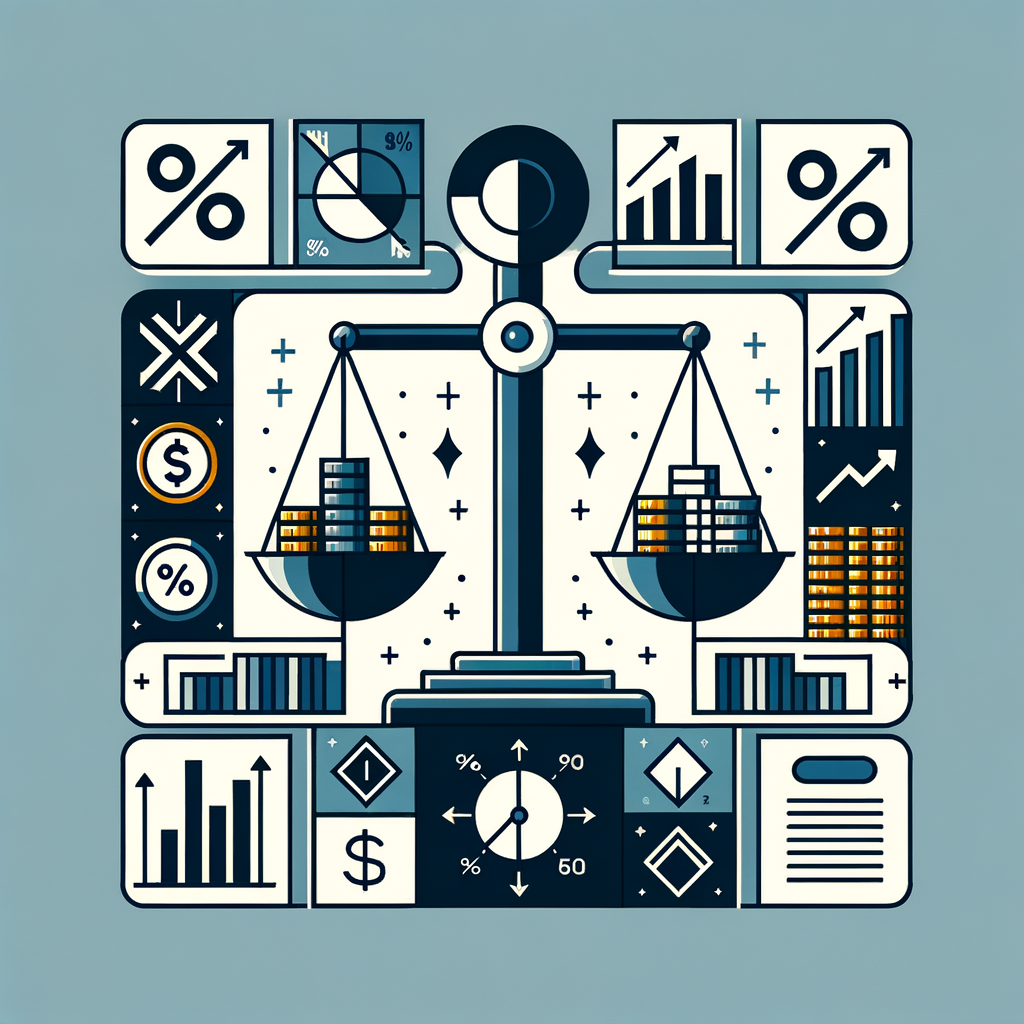A Comprehensive Guide on How Interest Rates Affect Share Market Trading in India
Ever notice how the Sensex and Nifty jump or fall right after an RBI monetary policy announcement? It’s not a coincidence. This post will demystify the crucial relationship between interest rates and the share market in India. For both salaried individuals planning their investments and small business owners managing their finances, understanding this connection is key to making informed financial decisions. We will explore the various ways interest rates affect share market dynamics, digging into the “why” behind these market movements. This article will cover what interest rates are, their direct impact on stocks, which sectors are most affected, and what practical steps investors should take in response.
Understanding Interest Rates: The RBI’s Role in the Indian Economy
Before we connect the dots to the stock market, it’s essential to understand the master controller of interest rates in India: the Reserve Bank of India (RBI). The RBI’s decisions create ripples that are felt across the entire economy, from your home loan EMI to the share price of a large corporation. The central bank uses various tools to manage the country’s money supply, control inflation, and foster economic growth, and its primary instrument is the policy interest rate.
What is the Repo Rate?
The Repo Rate is the main tool in the RBI’s arsenal. In simple terms, it’s the interest rate at which the Reserve Bank of India lends money to commercial banks like SBI, HDFC Bank, or ICICI Bank. Think of it as the “base” interest rate for the country. The RBI’s Monetary Policy Committee (MPC) meets regularly to decide whether to increase, decrease, or maintain this rate. This decision is not made lightly; it’s a strategic move to either cool down an overheating economy (by increasing rates to curb inflation) or to stimulate a sluggish one (by decreasing rates to encourage spending and investment). Every change in the repo rate is a powerful signal to the entire economy about the central bank’s outlook, highlighting The Role of Central Banks in Stock Market Trading. You can track the current policy rates directly on the Reserve Bank of India’s official website.
How RBI’s Rate Changes Impact You and Your Business
The effect of a repo rate change is like a stone thrown into a pond—it creates waves that spread outwards. When the RBI adjusts the repo rate, commercial banks quickly follow suit by adjusting their own lending and deposit rates. For individuals, this has a direct impact on daily finances. A rate hike means your home loan EMIs, car loans, and personal loans become more expensive, leaving you with less disposable income. On the flip side, it also means your Fixed Deposits (FDs) will earn a slightly higher return. For small and medium-sized businesses, these changes are even more critical. A higher interest rate increases the cost of borrowing for expansion, purchasing new equipment, or managing day-to-day working capital, which can squeeze profit margins. Conversely, a lower rate makes borrowing cheaper, encouraging investment and growth.
The Core Mechanism: How Do Interest Rates Affect Share Market Valuations?
At its core, the connection between interest rates and stock market valuations is generally inverse. This means when one goes up, the other tends to go down. Understanding this push-and-pull mechanism is fundamental to comprehending the impact of interest rates on share market India. The logic behind this inverse relationship is driven by corporate profitability, consumer behaviour, and investor psychology, all of which are sensitive to the cost of money.
When Interest Rates Rise: A Headwind for the Stock Market
When the RBI decides to increase interest rates, it acts as a brake on the economy and, consequently, a headwind for the stock market. This happens through three primary channels:
- Higher Corporate Borrowing Costs: Most companies rely on debt to fund their operations, from building new factories to managing inventory. When interest rates go up, the cost of servicing existing loans increases, and taking on new debt becomes more expensive. This directly eats into their profit margins. Lower profits and a weaker outlook for future earnings make a company’s stock less attractive to investors, often leading to a drop in its price.
- Reduced Consumer Spending Power: As discussed, higher rates mean costlier loans for consumers. When people have to pay more for their home and car EMIs, they have less money left over for other purchases. This reduction in disposable income leads to a slowdown in demand for everything from new cars and appliances to clothes and vacations. This directly hurts the sales and revenues of publicly listed companies, further dampening investor sentiment.
- The Appeal of “Safer” Investments: Rising interest rates make fixed-income products like Fixed Deposits (FDs) and government bonds more attractive. If an investor can get a guaranteed 7-8% return from a risk-free FD, they might be less willing to take on the risk of the stock market for a potentially similar or lower return. This prompts some investors, particularly those who are risk-averse, to sell their stocks and move their money into these safer assets. This selling pressure can cause a broad-based decline in the market. These are some of the key interest rates effects on stock market India.
When Interest Rates Fall: A Tailwind for the Stock Market
Conversely, when the RBI cuts interest rates, it injects energy into the economy and provides a powerful tailwind for the stock market. The effects are the mirror opposite of a rate hike:
- Cheaper Corporate Borrowing: Lower interest rates are a boon for businesses. They can borrow money more cheaply to invest in new projects, expand their capacity, and hire more people. This signals growth and optimism about the future, which excites investors. Lower interest expenses also directly boost a company’s bottom line, leading to higher reported profits and potentially a higher stock price.
- Increased Consumer Spending: With lower EMIs on loans, consumers have more money in their pockets. This “wealth effect” encourages them to spend more freely on goods and services. Increased consumer demand drives higher sales for companies, leading to stronger revenue growth and improved financial performance, which is a positive catalyst for their stock valuations.
- Equities Become More Attractive: When FDs and bonds are offering low returns, investors naturally look for alternatives that can provide better growth for their capital. The stock market becomes the go-to destination. This influx of money into equities creates higher demand for shares, which pushes stock prices and the overall market indices (like Sensex and Nifty) higher. This dynamic is central to understanding how interest rates influence stock trading India.
Sector-Specific Analysis: Which Industries Are Most Sensitive?
While interest rate changes affect the entire market, the impact is not uniform. Some sectors are highly sensitive to these shifts, while others are more resilient. By understanding these nuances, investors can better anticipate stock trading trends based on interest rates India and adjust their portfolios accordingly.
Sectors That Tend to Benefit from Lower Interest Rates
These industries often see a direct and positive impact when the cost of borrowing falls:
- Real Estate & Construction: This is perhaps the most rate-sensitive sector. Cheaper home loans make purchasing property more affordable for the average person, directly fuelling demand for housing and boosting the fortunes of real estate developers.
- Automobiles: Like homes, most cars are purchased on credit. Lower interest rates on car loans reduce the monthly EMI, making it easier for consumers to buy new vehicles. This drives sales for automobile manufacturers.
- Banks & NBFCs: The relationship here is complex, but generally, a lower-rate environment can be positive. It encourages more people and businesses to take loans (loan growth), and if the banks’ cost of funds falls faster than their lending rates, their net interest margins (NIMs) can improve.
- Capital-Intensive Sectors: Industries like infrastructure, manufacturing, and power generation carry significant amounts of debt on their balance sheets to fund large projects. A fall in interest rates directly reduces their interest expense, leading to a substantial improvement in profitability.
Sectors That Are Negatively Impacted by Higher Interest Rates
These industries often face significant headwinds when interest rates begin to climb:
- High-Growth & Tech Stocks: The valuation of many technology and startup companies is based on the promise of high earnings far into the future. In finance, a “discount rate” (which is heavily influenced by prevailing interest rates) is used to calculate the present value of these future earnings. When interest rates rise, this discount rate also rises, making those future profits worth less in today’s terms. This can cause a sharp correction in the stock prices of these companies, even if their business is performing well.
- Utilities: Companies in the utility sector (e.g., power, gas) are stable but typically have very high levels of debt used to finance their massive infrastructure. Higher interest rates increase their financing costs, which can put pressure on their profits.
- Consumer Discretionary: This category includes non-essential goods and services like luxury items, high-end electronics, and expensive travel. When rising EMIs squeeze household budgets, these are often the first expenses that consumers cut back on, leading to a drop in demand and sales for these companies.
An Investor’s Action Plan: Navigating the Interest Rate Cycle
Knowing the theory is one thing, but applying it is what matters. The real question is how interest rates affect market trading in India from a practical standpoint for you. Whether you’re a salaried professional building a retirement corpus or a business owner managing company funds, here’s how you can navigate the interest rate cycle.
For Salaried Individuals
- Focus on Long-Term Goals: The most important rule is to avoid knee-jerk reactions. Interest rate cycles are a normal part of economics. Trying to time the market by selling everything when rates rise and buying when they fall is a losing game for most. A well-diversified portfolio and consistent investing through Systematic Investment Plans (SIPs) are designed to weather this kind of short-term volatility.
- Review Your Asset Allocation: A changing interest rate environment is a good trigger to review, not overhaul, your portfolio. In a high-interest-rate scenario, check if your allocation to debt instruments (like FDs, PPF, or debt mutual funds) aligns with your risk appetite and financial goals. They may offer more attractive returns than they did previously, providing a good balancing element to your equity holdings. Exploring various Top Tax-Saving Investment Options in India can be a prudent step in this situation.
For Small Business Owners
- Manage Your Business Debt: As a business owner, you must be acutely aware of how rate changes impact your bottom line. If you have floating-rate loans, a rate hike will increase your repayment burden. This is a good time to assess your debt structure. If rates are expected to fall, it might be a good time to consider refinancing existing loans to lock in a lower cost of capital for the future.
- Invest Surplus Capital Wisely: Your business’s surplus cash should also be managed strategically. A rising rate environment might present low-risk opportunities in liquid funds or short-term FDs to park your money. Conversely, a falling rate environment could be a signal to review long-term equity investment strategies, as business and market sentiment may be turning positive. Effectively Managing Cash Flow Effectively During Tax Season is crucial regardless of the interest rate environment.
Conclusion
To summarize, the way interest rates affect share market performance is generally inverse and deeply intertwined with the health of the economy. Lower interest rates act as fuel, making it cheaper for companies to grow and consumers to spend, while making stocks look more attractive compared to fixed-income alternatives. Higher interest rates act as a brake, increasing costs and making safer investments more appealing. The share market trading impact of interest rates is undeniable and is a critical factor for any investor to watch. However, it’s crucial to remember that this is just one piece of a very large and complex puzzle. Other factors like corporate earnings, government policies, and the Impact of Global Events on Share Market Trading also play a huge role in determining the market’s direction.
Managing your personal and business finances requires a holistic view. Whether you need help with tax planning, GST filing, or investment advisory, TaxRobo’s experts are here to help you navigate the financial landscape. Contact us today for a consultation!
FAQs (Frequently Asked Questions)
1. What is the direct relationship between RBI’s repo rate and the stock market in India?
The relationship is typically inverse. When the RBI increases the repo rate, borrowing becomes more expensive for companies and consumers, which can negatively impact corporate profits and stock prices. This generally leads to a bearish or cautious sentiment in the market. Conversely, a repo rate cut makes borrowing cheaper, stimulating economic activity and is generally seen as positive for the stock market.
2. Do all stocks fall when interest rates rise in India?
Not necessarily. While the broader market indices like the Sensex and Nifty may face downward pressure, some sectors or companies might be less affected. For instance, companies with strong balance sheets, very little debt, and strong pricing power (the ability to pass on costs to customers) are better positioned to weather a rising rate environment. However, high-growth, high-debt, and rate-sensitive sectors like real estate and auto are usually the most vulnerable.
3. How quickly does the share market react to an interest rate change?
The stock market is forward-looking and often reacts instantaneously to the RBI’s monetary policy announcements. Sometimes, the market even moves in anticipation of a decision based on economists’ forecasts. The initial reaction is driven by whether the RBI’s move was in line with expectations or a complete surprise. The real, fundamental impact on corporate earnings and stock prices, however, unfolds over the subsequent months and quarters.
4. Should I sell my stocks when the RBI increases interest rates?
Making major investment decisions based on a single economic indicator is generally not advisable. For long-term investors, it’s far more important to focus on the fundamental strength, growth prospects, and valuation of the companies you are invested in. Interest rate cycles come and go, and short-term market volatility is a normal part of investing. A disciplined investment strategy, such as continuing your SIPs through these cycles, is often more effective than attempting to time the market based on RBI announcements.



